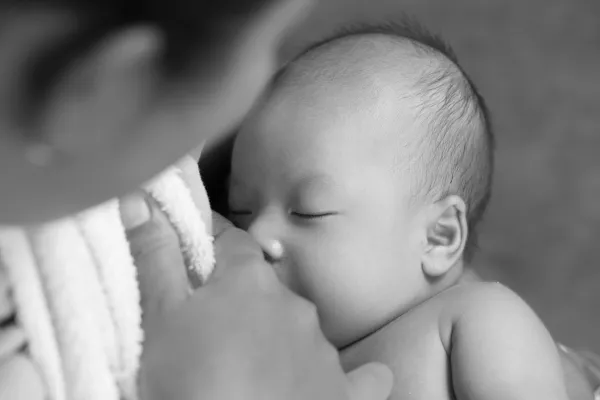Keep Atop Infant Feeding Difficulties Dx Differences

Once the infant reaches this age, you can’t use newborn codes anymore.
Physicians diagnosing a newborn infant with feeding difficulties is a constant challenge for coders.
Why? You will have to understand the exact type of feeding difficulty that the child is experiencing, as this will influence your diagnosis code choice. You should also know that you will need to use different code sets for older infants.
Use these four handy tips to understand how to report feeding difficulties when your physician diagnoses it ininfants.
1. Know Feeding Problem Types
When a newborn is discharged out of the hospital, your physician will request the mother to get the infant back for a follow up visit within two to three days. Your clinician might record that these follow-up visits are not always well visits and might diagnose some problem or the other. In many instances, your physician might diagnose feeding problems in the newborn child.
If your clinician diagnoses feeding problems, you will have to report the diagnosis with the P92.- (Feeding problems of newborn…) series of codes. You will have to report one of the appropriate expansions to P92.- depending on the type of feeding problems that the infant might be facing.
Feeding problems that you will come across typically are underfeeding or overfeeding. While you will come across many instances of underfeeding in the newborn, overfeeding generally is a result of usage of supplemental foods and is a problem that you will see in older children and not in infants. If you do encounter overfeeding in a newborn, report it with P92.4 (Overfeeding of newborn).
Your physician will diagnose the feeding problem as underfeeding if the infant is unable to consume an adequate quantity of milk. When such instances occur, you report the diagnosis with P92.3 (Underfeeding of newborn). If the infant is not able to consume enough quantity of milk due to slow feeding, you report it with P92.2 (Slow feeding of newborn).
In some instances, your clinician will diagnose that the baby has difficulty in suckling the milk from the mother’s breast. In such cases, you will have to report the feeding problem with P92.5 (Neonatal difficulty in feeding at breast). If your clinician records that the infant’s physical growth determined by weight to height ratio is well below average, then you will have to report this diagnosis as P92.6 (Failure to thrive in newborn). For other feeding problems in newborns, consider code P92.8 (Other feeding problems of newborn), and if the problem is unspecified, consider code P92.9 (Feeding problem of newborn, unspecified).
2. Understand Vomiting, Regurgitation Differences
You will also come across instances where your physician will record feeding problems like vomiting and regurgitation in the infant while feeding. So, you will need to know the difference between the two in order to correctly report the feeding problem that is occurring.
If the baby is bringing back small amounts of milk after swallowing, you will have to report this with regurgitation. In such a case, you will report the diagnosis with P92.1 (Regurgitation and rumination of newborn). On the other hand, if the child is completely evacuating all the milk that has been consumed, you will have to report a vomiting code. You have to two codes to report vomiting in the newborn. If the vomit is greenish, it indicates that the vomitus has bile contents, and you will have to report it with P92.01 (Bilious vomiting of newborn). If the vomit does not contain any bile contents, you will have to report this feeding problem with P92.09 (Other vomiting of newborn).
3. Consider Age When Choosing Dx
You will need to note that you can use the P92.- series of codes only when your physician diagnoses feeding problems in an infant who is not older than 28 days. “The definition of P92 is feeding problems of newborns,” says Suzan (Berman) Hauptman, MPM, CPC, CEMC, CEDC, senior principal of ACE Med, a medical auditing, coding and education organization in Pittsburgh, Pa. “That indicates this code set should only be used for that type of issue. If the patient is older, ICD tells you to use a different code family.”
“The Excludes1 note under the category heading P92 instructs the coder that codes in the P92 category cannot be used on infants over 28 days old,” says Lorraine M. Papazian-Boyce, MS, CPC, AHIMA-Approved ICD-10-CM/PCS Trainer, President of PB Resources, Inc. in Belfair, Wash. “The coder is cross referenced to code R63.3.”
When feeding problems occur in an infant who is more than 28 days old, then you will have to substitute the use of P92.- with other series of codes as appropriate.
“For vomiting in an infant over 28 days, use different code set, R11.--,” says Melody Lidmila, CPC, CEC, Coding specialist at the University of Colorado Health in Loveland. For bilious vomiting in a child older than 28 days, you will have to report R11.14 (Bilious vomiting) instead of P92.01. You will substitute P92.09 with R11.10 (Vomiting, unspecified) for vomiting without any bilious contents.
When your physician diagnoses regurgitation in infants older than 28 days, you will have to report R63.3 (Feeding difficulties) instead of P92.1, unless the feeding disorder is of nonorganic origin (in which case ICD-10-CM directs you to F98.2- (Other feeding disorders of infancy and childhood…). You also report R63.3 for other feeding problems such as underfeeding, slow feeding, and difficulty in feeding at the breast in infants more than 28 days old. For failure to thrive in a child over 28 days old, you will report R62.51 (Failure to thrive [child]) instead of P92.6.
Example: Your physician assesses a month-old child during a follow up visit. During the visit, your physician assesses that the child has below average weight gain for her age. Your clinician diagnoses failure to thrive. You report R62.51 as the infant is more than 28 days old. If the same diagnosis was made when the child was less than 28 days old, you would have reported the diagnosis with P92.6.
4. Check for Added Diagnosis
In some instances, your clinician might note that the infant suffers from feeding problems like vomiting due to a more serious issue such as intestinal obstruction. In such a case, you will have to report the vomiting with a code such as P92.01. In addition, you will have to have to report the intestinal obstruction with an appropriate code such as Q41.9 (Congenital absence, atresia and stenosis of small intestine, part unspecified). “All diagnoses that best describe the situation of the patient and the documentation supports, should be used unless the instructional notes around those codes say differently,” Hauptman adds.
Example: Your clinician evaluated a 10-day old infant for vomiting of greenish bile and having feeding difficulties. Your clinician diagnosed the child with intestinal obstruction. You will have to report Q41.9 for the intestinal obstruction and use P92.01 to report the bilious vomiting that the infant is experiencing.




